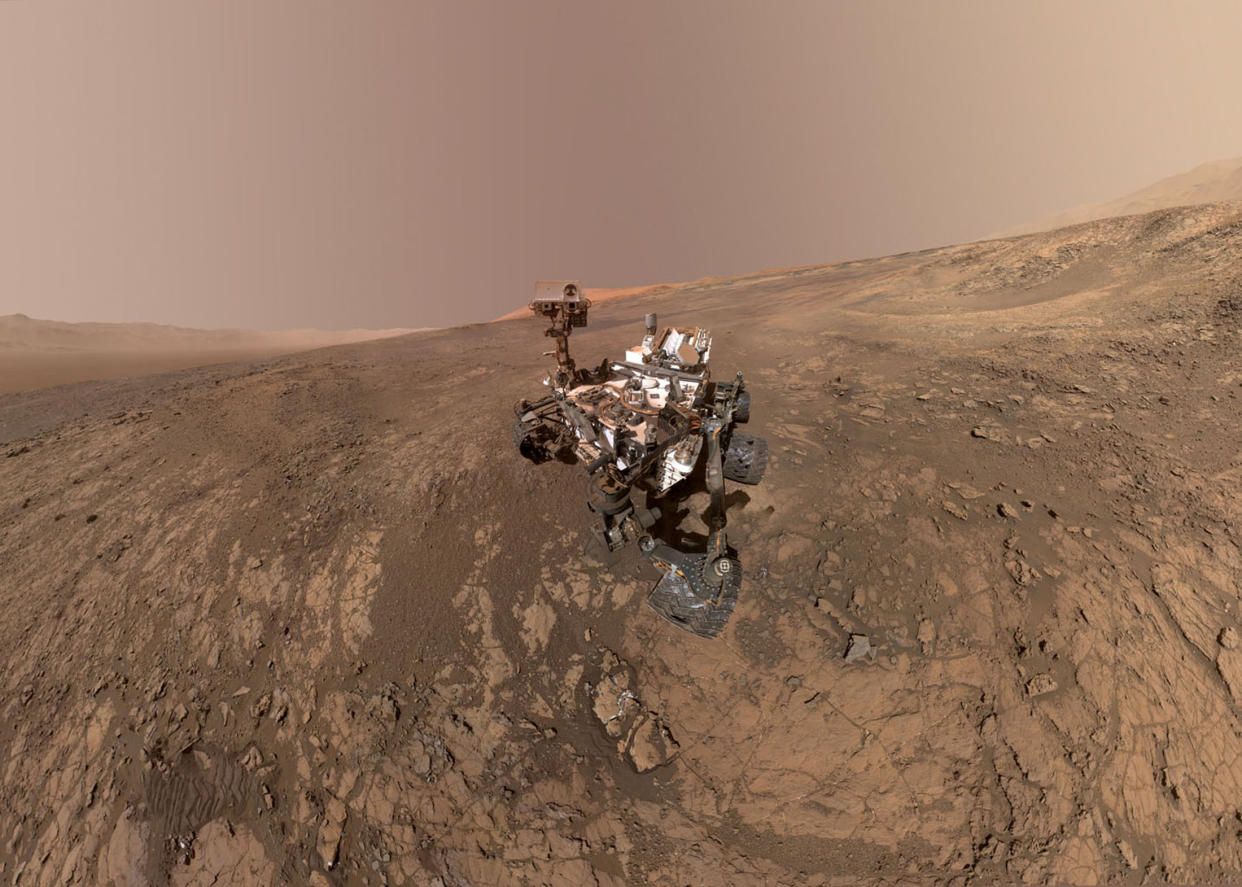Mystery of sudden methane ‘plume’ detected by NASA Mars rover

A spike of methane on Mars has fuelled discussions that it could be caused by alien life on the Red Planet - after NASA’s Curiosity rover detected the highest levels of the gas yet.
This week, the methane levels have dropped once again, down to background levels, and NASA has described the event as a ‘transient methane plume’.
Last week's measurement is the highest concentration the mission has recorded since landing on the planet in August 2012.
This change matches up with previous highs and lows picked up by Curiosity's Sample Analysis at Mars (SAM), an instrument tasked with analysing gases, although l'
‘We did make the run again, the data just came back and in fact the methane plume went away,’ said Paul Mahaffy, principal investigator for SAM.
Read more from Yahoo News UK:
Boris Johnson's team forced to deny he only owns one pair of socks
Boy, 12, arrested on suspicion of homophobic assault in Liverpool
Ian Brady ‘had access to vulnerable teenagers in Wormwood Scrubs’
Curiosity is not fitted with equipment to figure out the source of the methane, making it impossible to tell whether it is biological or geological.
Methane is destroyed by solar radiation within several hundred years when it enters the atmosphere, so it must have been released quite recently.
Despite this, there remains the possibility that the gas could have been trapped underground for millions or billions of years, and only just been released.
'The methane mystery continues,' said Ashwin Vasavada, Curiosity's project scientist at Nasa's Jet Propulsion Laboratory.
'We're more motivated than ever to keep measuring and put our brains together to figure out how methane behaves in the Martian atmosphere.'

 Yahoo News
Yahoo News 

